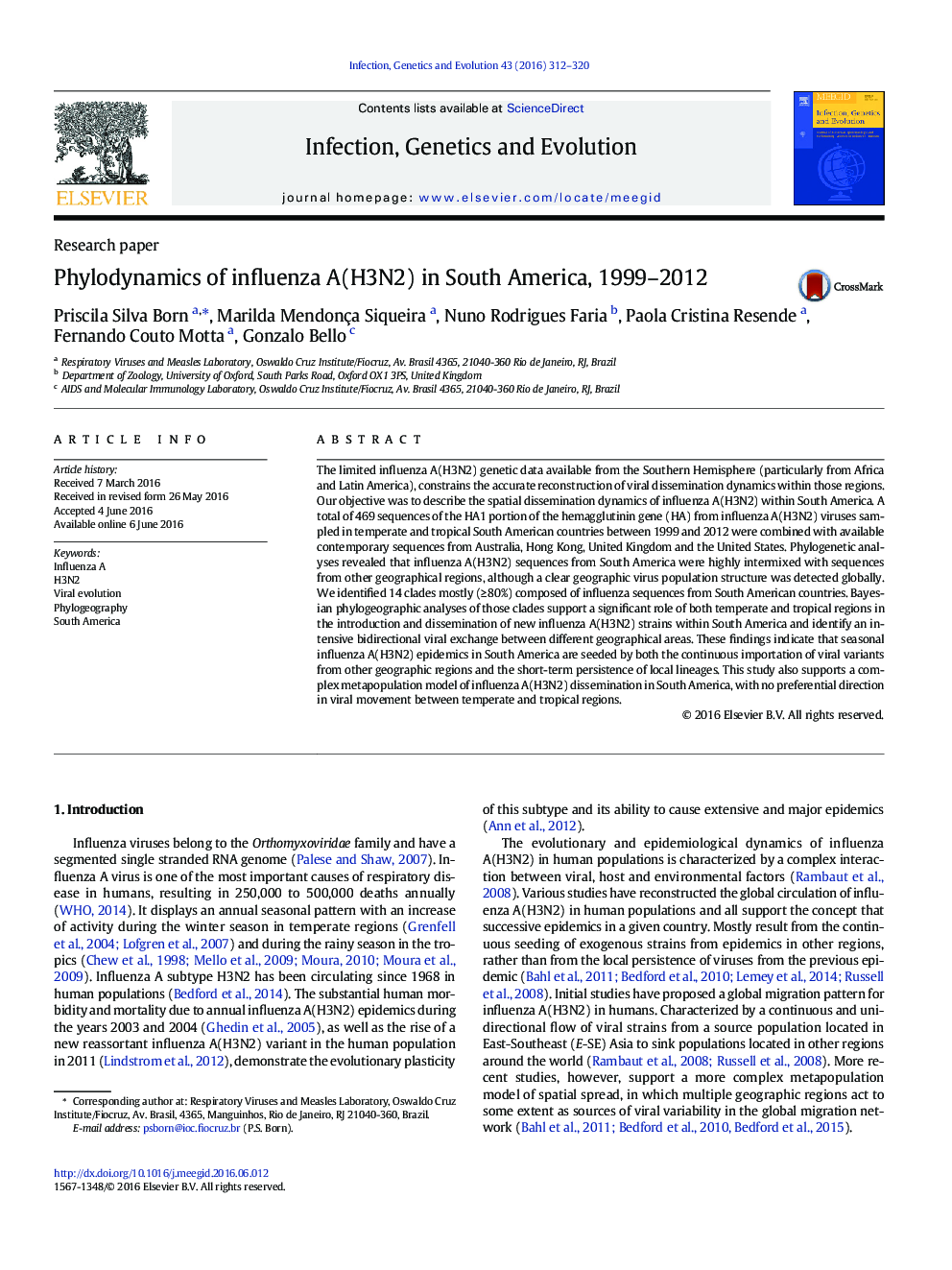| Article ID | Journal | Published Year | Pages | File Type |
|---|---|---|---|---|
| 2822973 | Infection, Genetics and Evolution | 2016 | 9 Pages |
•We study the phylogeography of Influenza A(H3N2) in South America from 1999 to 2012.•A metapopulation model of influenza A(H3N2) dispersion in South America is proposed.•A bidirectional viral flux between temperate and tropical regions was observed.•Both temperate and tropical zones are important for influenza H3N2 seeding in the continent.
The limited influenza A(H3N2) genetic data available from the Southern Hemisphere (particularly from Africa and Latin America), constrains the accurate reconstruction of viral dissemination dynamics within those regions. Our objective was to describe the spatial dissemination dynamics of influenza A(H3N2) within South America. A total of 469 sequences of the HA1 portion of the hemagglutinin gene (HA) from influenza A(H3N2) viruses sampled in temperate and tropical South American countries between 1999 and 2012 were combined with available contemporary sequences from Australia, Hong Kong, United Kingdom and the United States. Phylogenetic analyses revealed that influenza A(H3N2) sequences from South America were highly intermixed with sequences from other geographical regions, although a clear geographic virus population structure was detected globally. We identified 14 clades mostly (≥ 80%) composed of influenza sequences from South American countries. Bayesian phylogeographic analyses of those clades support a significant role of both temperate and tropical regions in the introduction and dissemination of new influenza A(H3N2) strains within South America and identify an intensive bidirectional viral exchange between different geographical areas. These findings indicate that seasonal influenza A(H3N2) epidemics in South America are seeded by both the continuous importation of viral variants from other geographic regions and the short-term persistence of local lineages. This study also supports a complex metapopulation model of influenza A(H3N2) dissemination in South America, with no preferential direction in viral movement between temperate and tropical regions.
